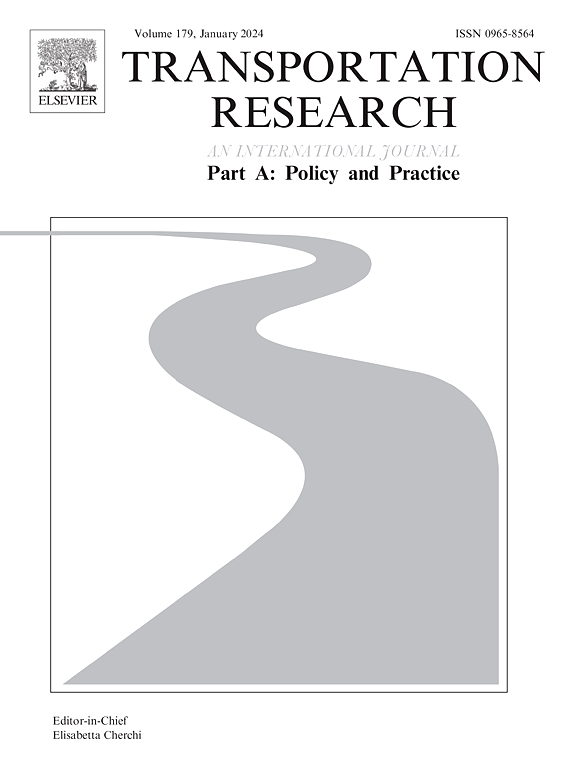Promoting the adoption of electric vehicles through private charging infrastructure: Should subsidies be for the builder or non-builder?
IF 6.3
1区 工程技术
Q1 ECONOMICS
Transportation Research Part A-Policy and Practice
Pub Date : 2025-02-01
DOI:10.1016/j.tra.2024.104368
引用次数: 0
Abstract
To increase electric vehicle (EV) adoption, many governments subsidize EV buyers who build private charging infrastructure (PCI). However, this subsidy scheme is controversial because it is only available for the conditional consumer segment (CCS) that can build PCI, except for the unconditional consumer segment (UCS), which has a lower willingness-to-pay for EV. This raises the question as to, whether subsidizing the UCS could be more effective. In this study, we propose a Stackelberg game model to determine the government’s optimal subsidy scheme, for PCI builders or non-builders, when one EV automaker competes with one fuel vehicle (FV) automaker. The analysis finds that both subsidy schemes can increase EV adoption and consumer welfare, but have opposite effects on the pricing of EV and PCI. The government should subsidize the PCI non-builder when the CCS rate is lower than one threshold and the EV adoption target is higher than a second threshold. Otherwise, a subsidy scheme for PCI builder is optimal. When the fixed cost of EV is relatively high, the government should set the EV adoption target higher than one threshold to avoid a “Backbiting Effect” that lowers both profits of EV and FV automakers. In addition, in both subsidy schemes, when the CCS rate increases or the complementary performance of PCI improves, the government should counter-intuitively increase subsidies to achieve the EV adoption target in some cases. Our results highlight recommendations for governments on methods for implementing PCI subsidy schemes and provide pricing insights for automakers.
求助全文
约1分钟内获得全文
求助全文
来源期刊
CiteScore
13.20
自引率
7.80%
发文量
257
审稿时长
9.8 months
期刊介绍:
Transportation Research: Part A contains papers of general interest in all passenger and freight transportation modes: policy analysis, formulation and evaluation; planning; interaction with the political, socioeconomic and physical environment; design, management and evaluation of transportation systems. Topics are approached from any discipline or perspective: economics, engineering, sociology, psychology, etc. Case studies, survey and expository papers are included, as are articles which contribute to unification of the field, or to an understanding of the comparative aspects of different systems. Papers which assess the scope for technological innovation within a social or political framework are also published. The journal is international, and places equal emphasis on the problems of industrialized and non-industrialized regions.
Part A''s aims and scope are complementary to Transportation Research Part B: Methodological, Part C: Emerging Technologies and Part D: Transport and Environment. Part E: Logistics and Transportation Review. Part F: Traffic Psychology and Behaviour. The complete set forms the most cohesive and comprehensive reference of current research in transportation science.

 求助内容:
求助内容: 应助结果提醒方式:
应助结果提醒方式:


